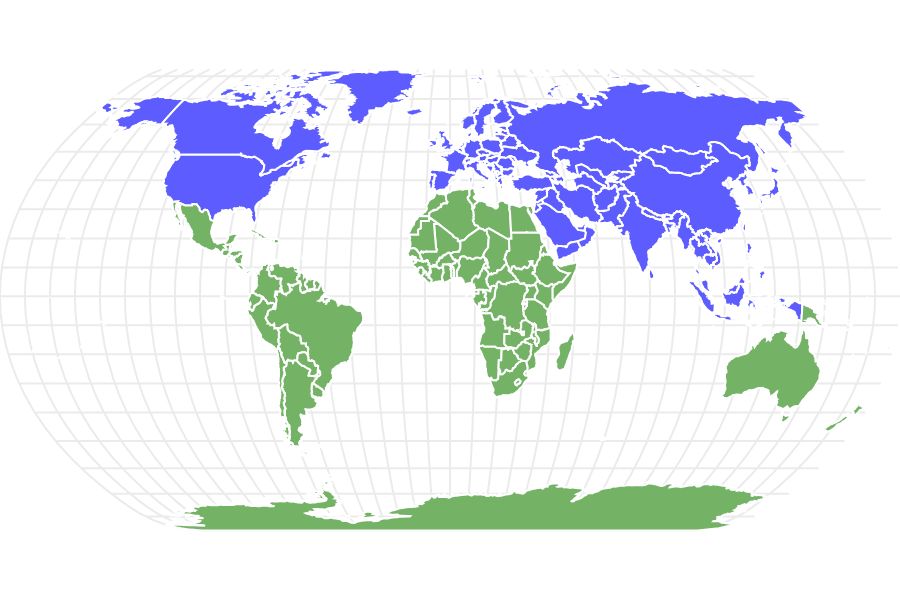Deer
Odocoileus virginiana
There are around 40 different species!
Advertisement
Deer Scientific Classification
- Kingdom
- Animalia
- Phylum
- Chordata
- Class
- Mammalia
- Order
- Artiodactyla
- Family
- Cervidae
- Scientific Name
- Odocoileus virginiana
Read our Complete Guide to Classification of Animals.
Deer Conservation Status
Deer Facts
- Main Prey
- Acorns, Fruit, Grass
- Distinctive Feature
- Long ears and some male species have antlers
- Habitat
- Dense forest and planted areas
- Diet
- Herbivore
- Average Litter Size
- 1
Foraging languidly among forests and plains, the deer is one of the most familiar and recognizable sights in all of nature.
The deer is an animal that has proliferated across the globe and evolved many adaptations to help it cope with the rigors of a hostile world. Its regal antlers are some of the most notable characteristics in the animal kingdom, used for defense and sexual signaling. When it is disturbed, it can spring into action with its remarkable speed, agility, and finesse. And it has evolved a unique ability to digest all kinds of vegetation. The deer is a kind of evolutionary success story.
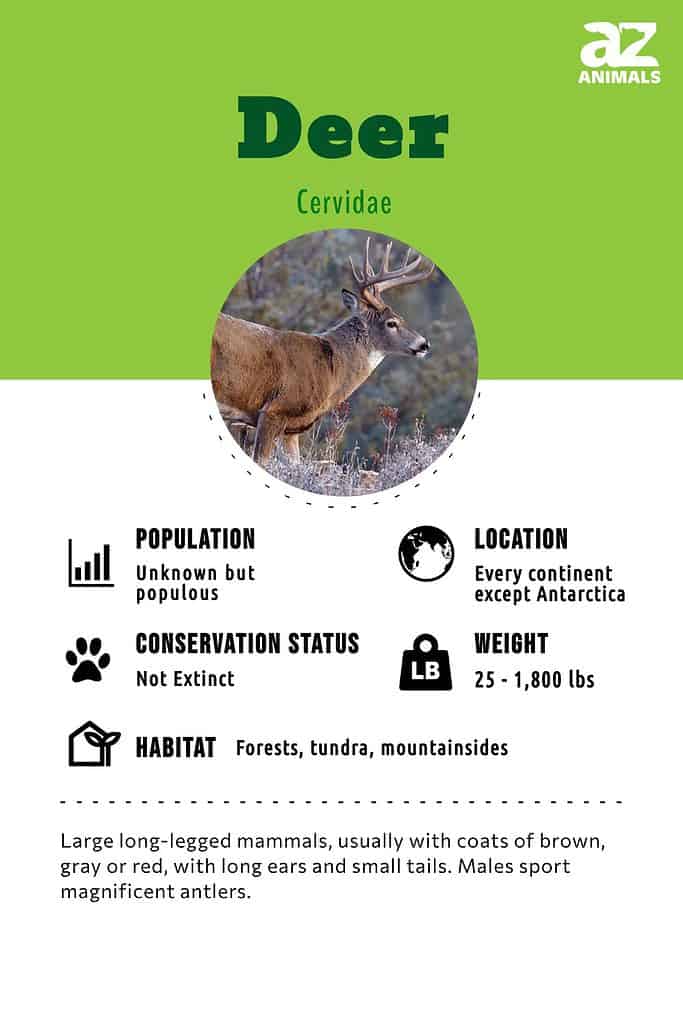
Interesting Deer Facts
- Deer are animals that have traditionally occupied an integral role in various cultures and mythologies around the world. The famous cave paintings of Lascaux, which date back around 17,000 years, depict a rich, imaginative canvas of horses, deer, and other animals.
- A symbol of strength and nobility, they once adorned many of the flags, banners, and coats-of-arms of medieval Europe.
- Males are known as bucks or stags, while females are called doe. In larger species, the correct terms are bull and cow.
- Deer shed and then grow back their antlers every year after the end of the mating season.
You can check out more incredible facts about deer.

Mule deer are named for the shape of their ears and are native to North America.
©iStock.com/Tiago_Fernandez
Scientific Name
Cervidae is the scientific name for all species of deer. It derives from the Latin word Cervus, which simply means stag or deer. The Cervidae family belongs to the order Artiodactyla, which represents all even-toed ungulates or hoofed animals with a certain kind of foot. The order includes giraffes, bison, hippos, pigs, camels, sheep, and cattle. More recent evidence suggests that cetaceans are also members of the order since they evolved from the even-toed ungulates tens of millions of years ago.
Taxonomists generally agree that there are three subfamilies of these animals. Capreolinae, which includes reindeer, white-tailed deer, and moose, is known colloquially as the New World deer. Cervinae, which features the elk, the red deer, the tropical muntjacs, and the tufted deer, are known as the Old World deer. The third subfamily, Hydropotinae, is represented by just the water deer. The terms Old World and New World do not designate the deer’s current range but rather how they evolved. They can be distinguished from each other by key differences in their skeletal morphology.
For most people, the Cervidae family is associated with white-tailed deer, red deer, mule deer, elk, caribou, and moose. But the entire family actually contains a massive amount of diversity. Taxonomists seem to disagree on the exact number of species, but by most counts, there are at least 40 still living, each one unique in its own way. Some sources put the number at more than 50 species.
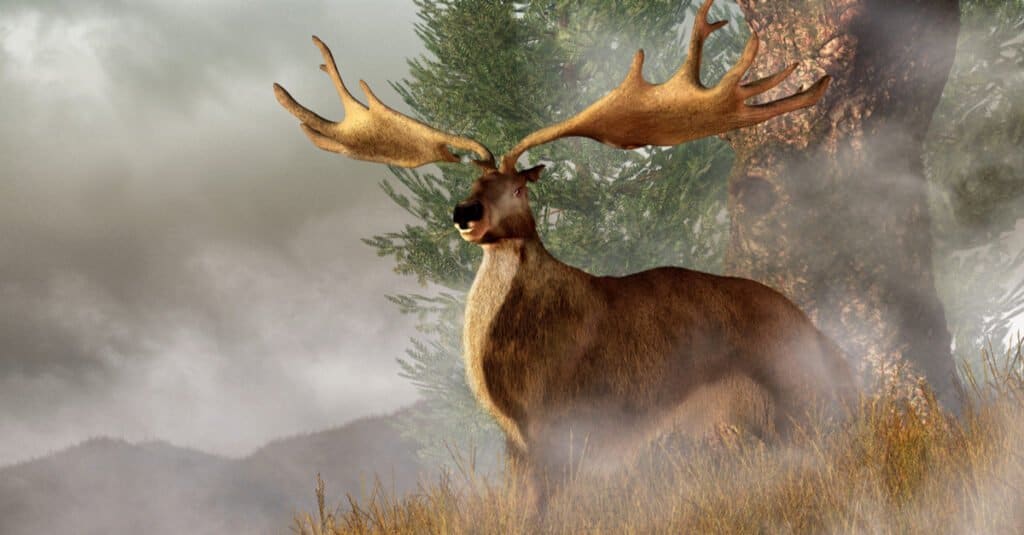
The Irish elk had massive antlers and is believed to have weighed more than 2,000 lbs
©Daniel Eskridge/Shutterstock.com
Evolution
Evidence from the fossil record suggests that these animals likely evolved around 20 million years ago. The earliest species were probably small creatures (much like the present-day mouse deer) with simple, rudimentary antlers and canine tusks. Many species flourished during the recent Pleistocene era, including the truly massive Irish elk, whose antlers may have weighed up to 90 lbs.
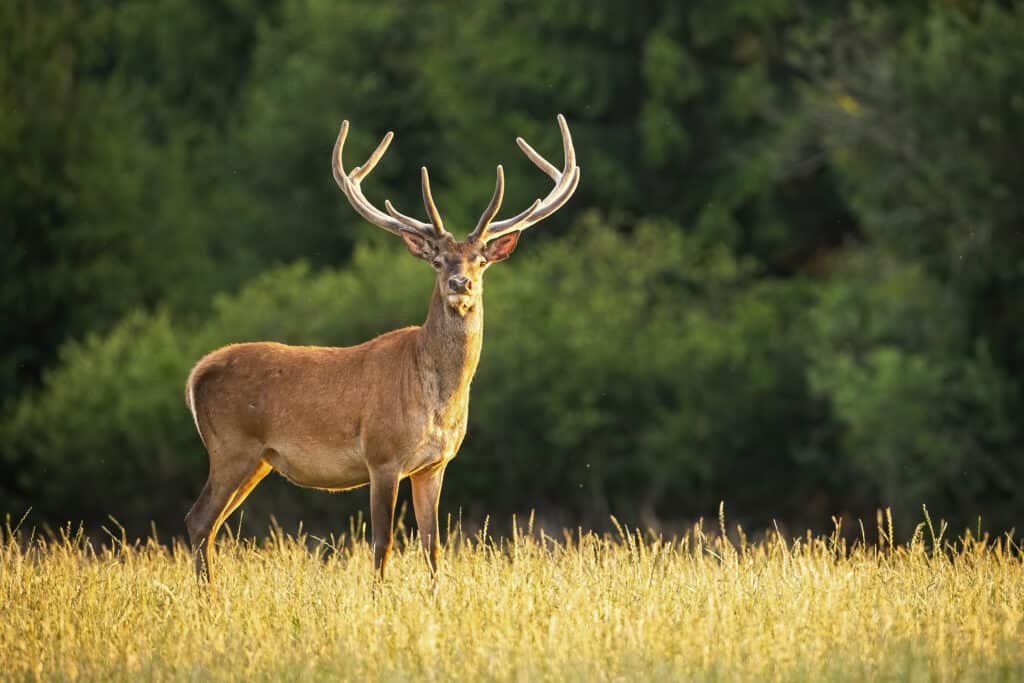
Antlers are the most prominent characteristic of male deer – their size determines hierarchy within the group.
©WildMedia/Shutterstock.com
Appearance and Behavior
Most deer species share in common a basic set of characteristics: two hooves on each foot, a four-chambered stomach, long and spindly legs, short tails, and a coat color that usually varies between brown, red, or gray. They also share a proclivity for the twilight hours. But the most prominent and conspicuous characteristic is the set of antlers on the head.
This large ornamentation reveals a clear delineation between the males and the females. All males possess antlers, while females lack them. Only in caribou (or reindeer) do the females grow antlers as well. The water deer is the lone aberration where neither gender grows antlers. Instead, both male and female members grow tusk-like canines instead of the elegant network of antlers. This appears to reflect an earlier pre-antler state of their evolution.
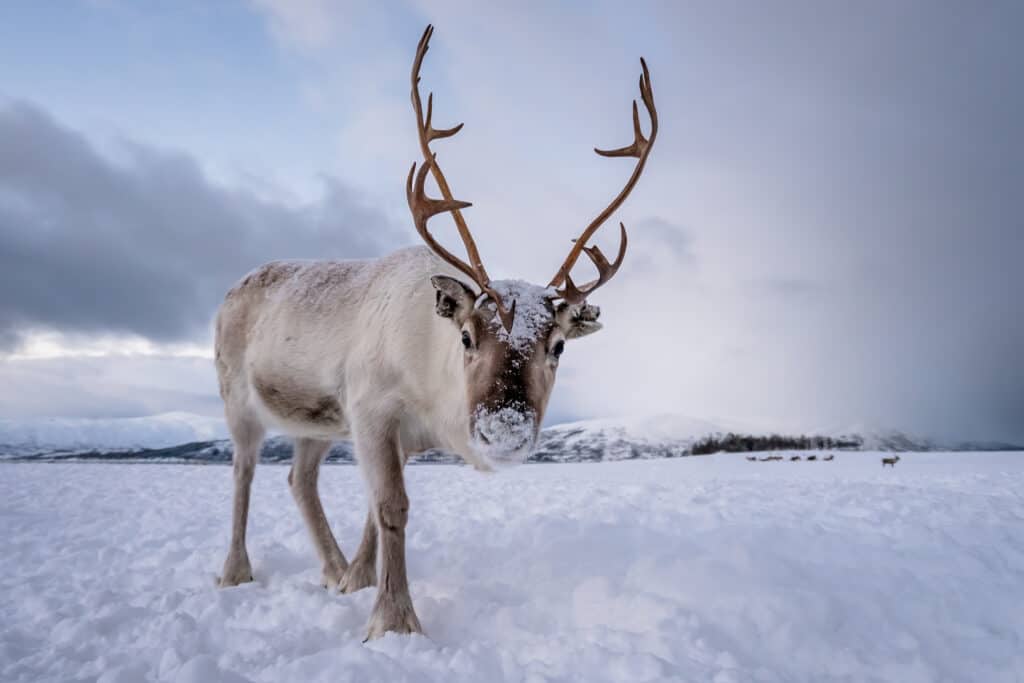
Reindeer are fascinating animals and can easily spot predators thanks to their ability to see ultraviolet light.
©Pav-Pro Photography Ltd/Shutterstock.com
The antlers are composed of simple bone (and thus well-preserved in the fossil record) with a coat of skin and blood vessels called velvet to help them grow. It takes several months for the antlers to reach their full efflorescence, upon which time the deer will slough off the layer of velvet. The antler’s main purpose is to assist the animal in combat and reproduction. As antlers require such a large investment of energy to grow, their size signals to females the reproductive fecundity and overall health of the males. They also help to establish social status and hierarchy in the group.
The size, curvature, and structure of the antlers are a source of immense variation between species. Some of them have a large central palmate (like moose antlers), while others have long single beams with varying numbers of branches. Some deer have nothing more than simple spikes for antlers. The reindeer have the largest antlers in relation to body size, but the moose can rival them in absolute terms.
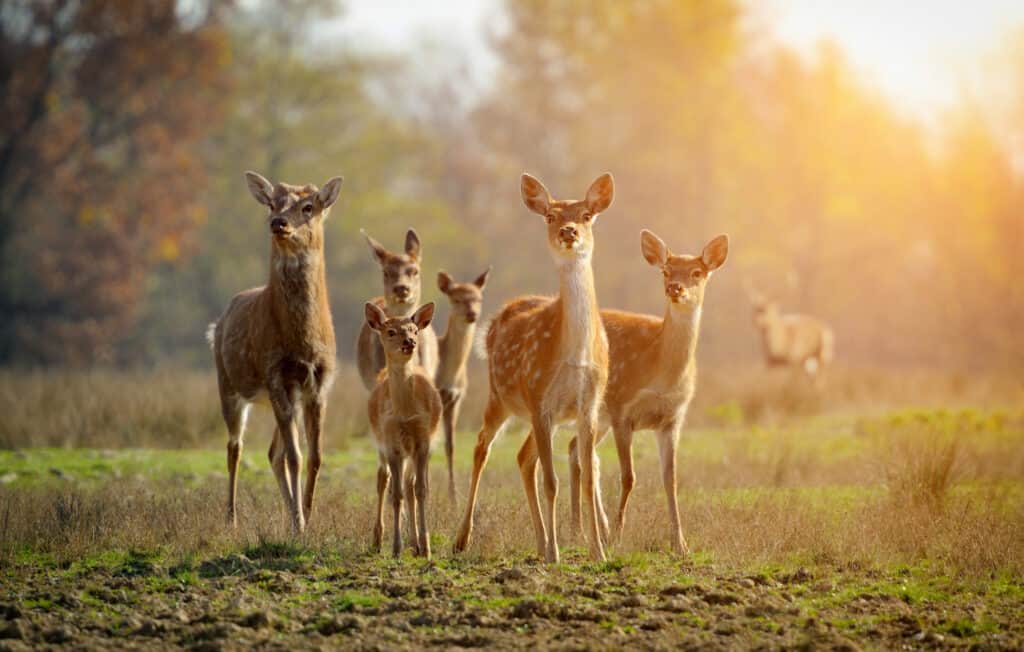
Deer like to feed during the twilight hours.
©Volodymyr Burdiak/Shutterstock.com
Deer are social animals. They usually congregate into small groups for feeding, mating, and protection. In the most densely packed areas, truly massive herds can form, depending on the abundance of food and the makeup of the population. Some species are migratory in nature and will travel hundreds of miles with the herd. To delineate social arrangements, they rely on their acute sense of smell and vocal communication. Many deer have a facial gland near the front of the eyes. The gland can release a strong pheromone for marking its territory when the animal rubs its body against trees or shrubs. Other glands reside on the legs and feet.
The smallest species of deer is the humble pudu. It can range anywhere between one and three feet in length. The largest species of Cervidae is the moose. It can reach 10 feet long and weigh up to 1,800 lbs. In between these two extremes lies the common white-tail deer, whose height and weight are about the same as a human. Males tend to be larger than females in almost every species.
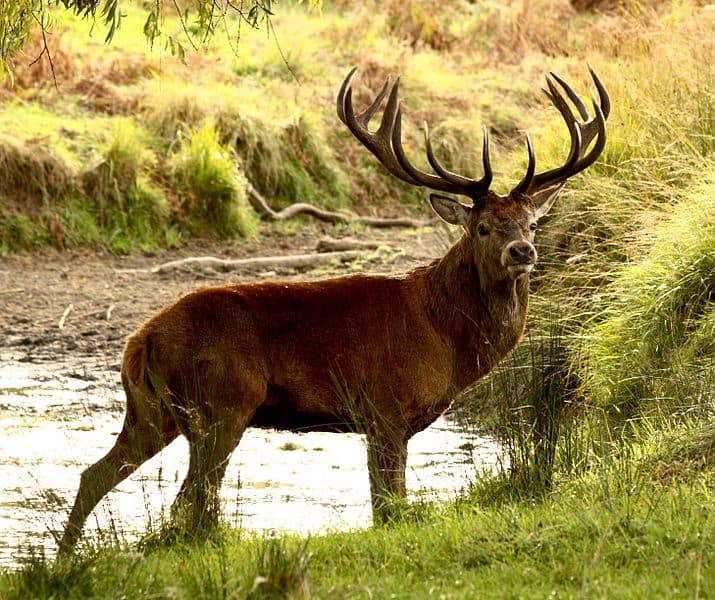
Deer inhabit every continent on earth except Antarctica.
©Donald Macauley / Creative Commons – Original
Habitat
These animals are present on nearly all continents on earth, including large unbroken expanses of North America, South America, Europe, and Asia. It contains only a single species of native deer, the Barbary red deer. Australia has no native species, but several have been introduced into the wild. These animals thrive in deciduous forests, tropical rainforests, wetlands, and grasslands. A few species inhabit the cold tundra of the north, feeding on the sparse vegetation. They are most frequently found in the areas between forests and open plains. They are also capable of adapting to urban and suburban settings, which means that some species can thrive despite human encroachment.
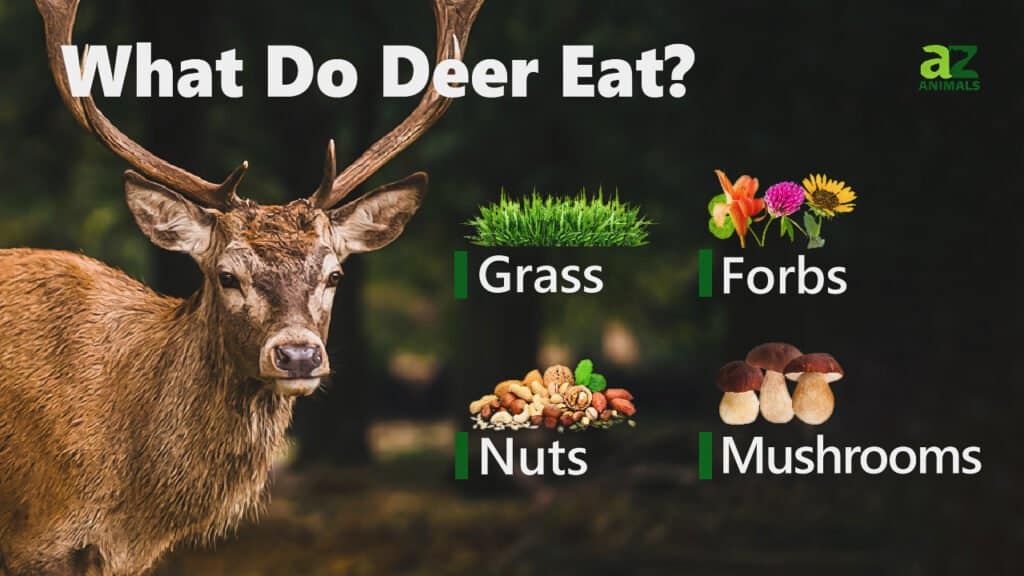
Diet
These animals’ diet consists almost entirely of leaves, grass, lichen, buds, fruit, and herbs. The deer family is a type of ruminant — a mammal that has the capacity to break down and ferment plants with its four-chamber stomach. Each chamber contains various microbes to assist with this task. After the food is processed by the first stomach, the animal will then regurgitate it as cud and attempt to chew through the tough plant material. The food then proceeds through the remaining chambers of the stomach for digestion. However, unlike many other ruminants such as sheep and cattle, their palate is more selective. They prefer high-quality food that’s easier to digest. This is due to the large amounts of energy and nutrition needed to grow antlers.
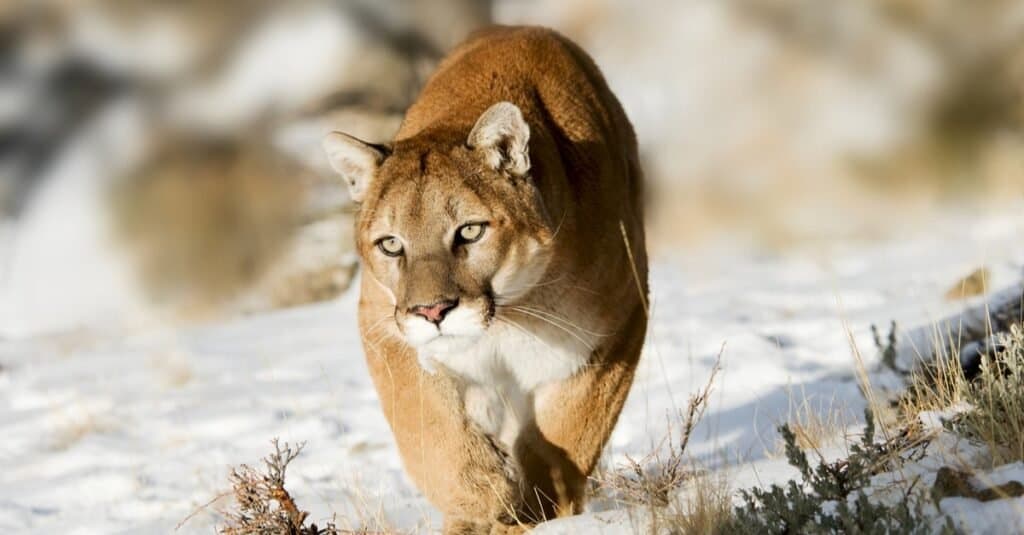
Mountain lions, bears, and other large cats prey on deer.
©Scott E Read/Shutterstock.com
Predators and Threats
These animals are a critical food source for many predators in the wild, including bears, mountain lions, jaguars, tigers, lynxes, coyotes, wolves, and large raptors. Birds and small mammals may feed on the carcass of a deceased deer. Individual animals, especially young fawns, are susceptible to predation. They aren’t completely defenseless against ferocious predators, but when given the choice, they will usually prefer to run. White-tailed deer have the ability to sprint up to 30 MPH. They can also leap immense distances up to 30 feet. If a nearby threat is spotted, deer may attempt to warn nearby members of the herd. The more solitary moose are protected by virtue of their size.
Since humans first evolved, deer have been historically an important source of food, clothing, and material to most societies. Modern hunting and habitat loss have threatened some species of deer, particularly in South Asia and the Pacific region, but with responsible stewardship, deer numbers can be maintained at healthy numbers. Climate change presents an acute problem as well. As the deer’s natural habitats change, it will force many of them to venture farther to the north.
Other sources of danger include ticks, lice, parasites, and disease. Some of these diseases can be passed on to other types of animals, particularly livestock.
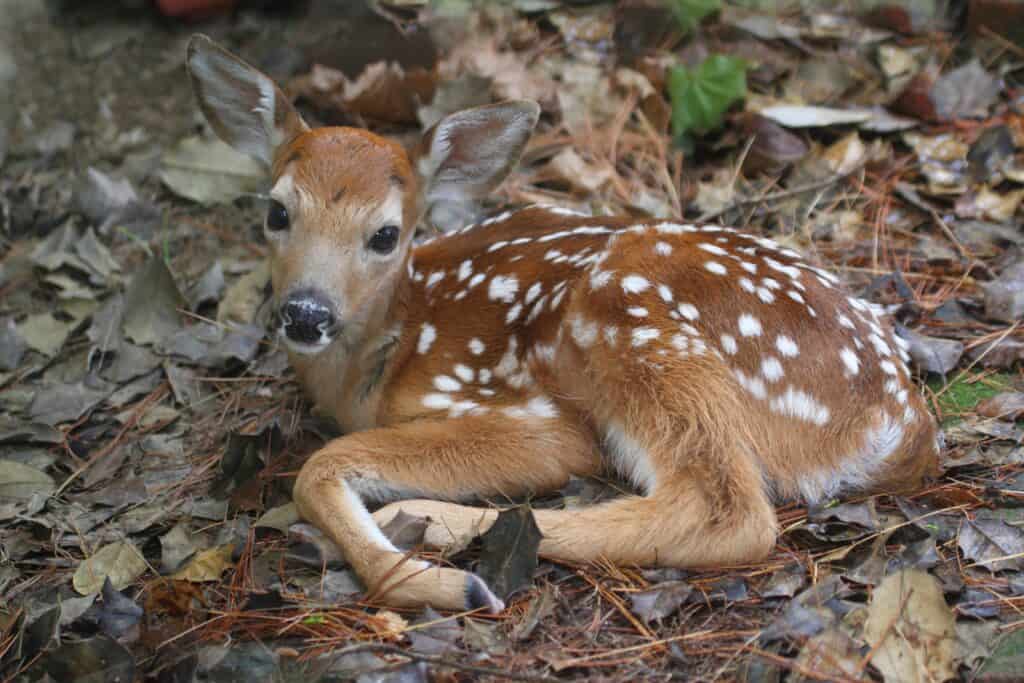
Fawns are often born with white spots to provide camouflage from predators.
©Steve Byland/Shutterstock.com
Reproduction, Babies, and Lifespan
The deer’s breeding season takes place every year for only a short amount of time. Most species pursue a reproduction strategy known as polygyny in which a single dominant male will have multiple female partners. Only a few species prefer to be monogamous. Because competition can be fierce, males tend to exhibit aggressive tendencies throughout the mating season, as they try to guard their territories and mate against potential rivals. As mentioned previously, antler size is a significant determinant of reproductive success.
Once a female deer is impregnated, the gestation period can last anywhere between six to eight months. Mothers will tend to produce one or two offspring at a time. Less commonly, the doe will produce three offspring. The young deer are known as fawns or calves, depending on the size of the species.
While out foraging, mothers will hide the fawn in nearby vegetation until the young animal is strong enough to begin walking on its own power. The fawns are often born with white spots to provide camouflage from predators. The offspring are weaned at two to five months, but they may stay with the mother for up to a year. Males often play minimal roles in raising young fawns.
After the first year of life, males will begin to grow their antlers on an annual basis. Deer can live around 12 years in the wild, give or take a few years, but hunting, predation, and vehicle collisions can greatly truncate the length of their lives. Many do not live beyond their fifth year of existence.
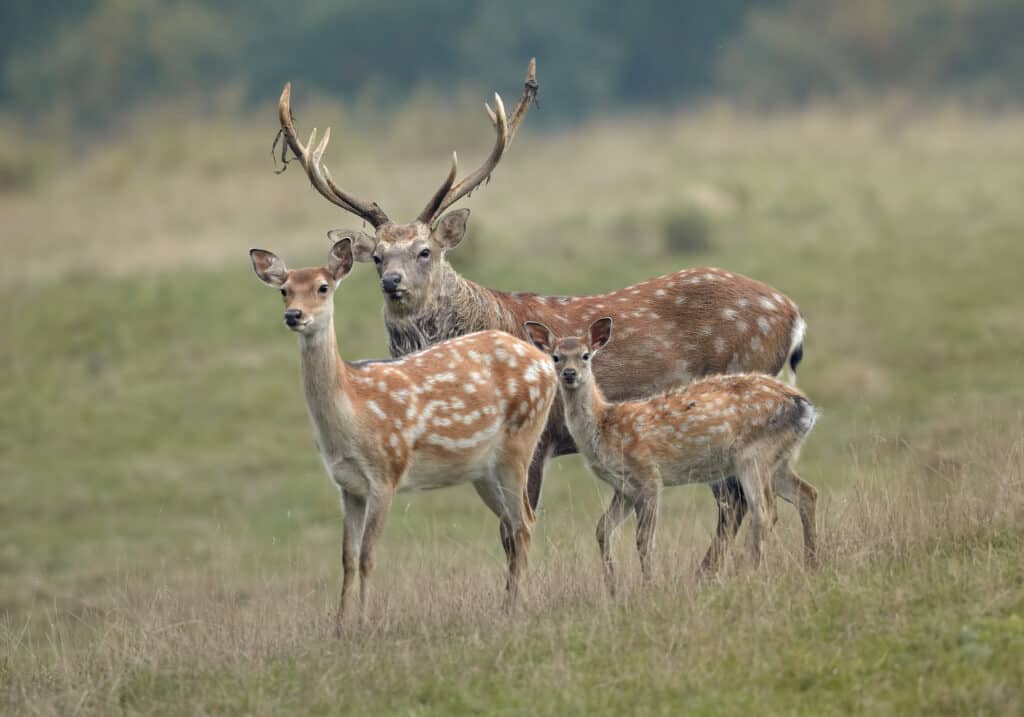
Sika deer, like the family above, can be found in Japan.
©Martin Mecnarowski/Shutterstock.com
Population
Due to commercial exploitation, populations of many deer species fell in the early and mid-20th centuries. But thanks to conservation efforts, populations have rebounded. Some estimates put the population size of the common white-tailed deer at around 30 million. Overpopulation has actually become a significant problem since humans have hunted many of the predators that keep the deer population in check. Therefore, regulated hunting is encouraged in many states as a means of population control.
The Americas are rich in several species of deer. The white-tailed deer occupies a large range between the South American coast, Central America, the eastern United States, and parts of Canada. The mule deer tends to occupy the western United States and overlaps with the white-tailed deer in some places. Enormous clusters of deer, including white-tail deer, mule deer, caribou, moose, and elk, congregate in the national parks of western Canada.
Endangered Species
Despite their ubiquity, many species and subspecies of deer are under threat. The Persian fallow deer, Chilean huemul, Kashmir stag, Indian hog deer, Bawean deer, and Eld’s deer are either endangered or critically endangered. The reindeer, water deer, barasingha, and others are approaching vulnerable status. Pere David’s deer, which is native to China, was declared extinct in the wild, but attempts have been made to reintroduce them back into their natural habitat.
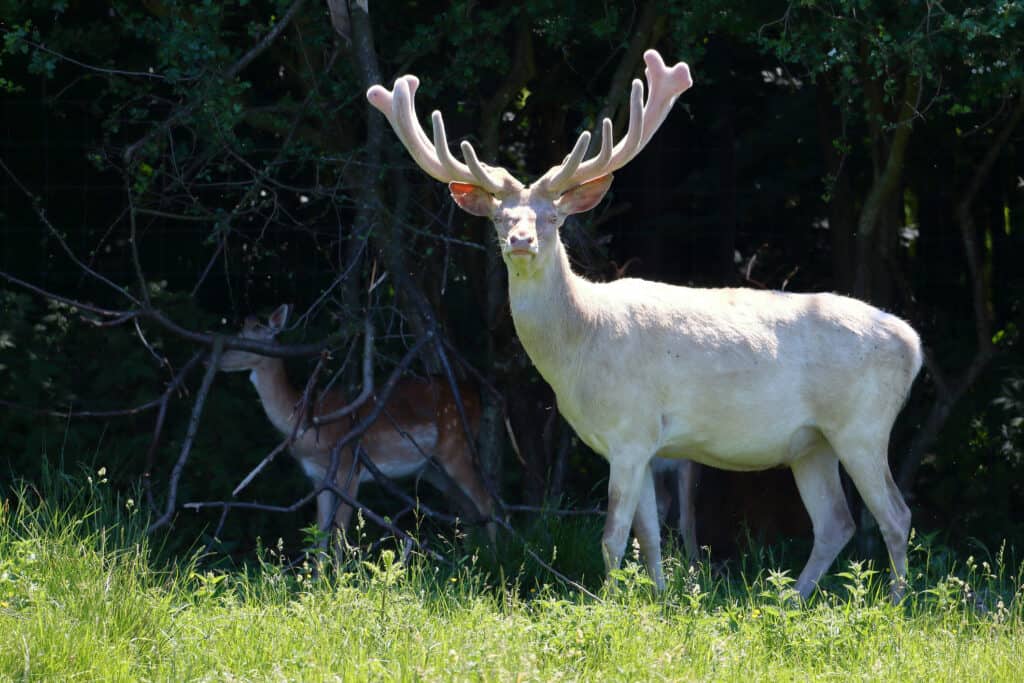
Albino deer are quite rare with a solid white coat with pink eyes, nose, and hooves.
©iStock.com/giannimarchetti
Types of Deer
The following list includes the most well-known deer species throughout the world:
Capreolinnae
- White-Tailed Deer – The white-tailed deer is the most common deer species in North America and can be identified by the white underside of its tail. Males tend to be larger than females, weighing up to 400 pounds when fully mature, and regrow their antlers every spring.
- Red Deer – Red deer can be found throughout Europe, parts of Asia, and Northern Africa, and populations have been introduced in New Zealand and Australia. Adult red deer stand about 4 feet high and have a reddish-brown coat.
- Mule Deer – Mule deer are indigenous to western North America and are named after their mule-like ears. Some mule deer species have been known to migrate hundreds of miles during winter months.
- Elk – Elk live in North America, Central America, and parts of Asia and can weigh up to 700 pounds. Mature male elk can run at speeds of up to 40 miles per hour.
- Caribou – Also known as reindeer, caribou generally inhabit arctic and subarctic climates. Both male and female caribou grow antlers, and a male’s antlers can reach up to 50 inches long.
- Moose – Moose are the largest member of the deer family and can weigh up to 1,800 pounds. Unlike most other deer species, moose tend to be solitary animals and can become aggressive when threatened.
- Brocket – Brocket deer are small-medium deer found on the Yucatan Penninsula, Central and South America and the island of Trinidad.
- Key – Key deer are a subspecies of white-tailed deer that can only be found in the Florida Keys. They are a little smaller than their white-tailed cousins.
- Padu – At only 13 inches tall, Padu are the world’s smallest deer! The Northern Padu can be found in Venezuela, Columbia, Ecador and Peru. The Southern Padu live in Chile and Argentina.
- Black-tailed – Black-tailed deer
Cervinae
- Barasingha – Also called the swamp deer, Barasingha deer is a large deer of India with unusual three-tined antlers. Some stags carry antlers with as many as 20 tines!
- Chital – The Chital deer is also known as the axis deer. This spotted beauty is native to India, Nepal, Sri Lanka and Bangeladesh.
- Fallow Deer – A native species of Europe, the fallow deer is a large animal with pale brown fur with creamy white spots. The fallow’s legs and neck are long and graceful – making it a most beautiful deer!
- Muntjac – There are actually 9 types of Muntjac deer dwelling in southern and southeast Asia. These deer are unique due to their tendency to “bark” when they sense danger – and for their odd “prehistoric-looking” antlers.
- Pere David’s Deer – This magnificent deer was nearly hunted to extinction – but has been bred back from captive deer in Eurpean zoos. Pere David’s deer now roam their native China once more!
- Persian Deer – This rare deer ranges in Iran and Israel and is similar to the Fallow deer – with light brown coat with spots.
- Red Deer – One of the largest deer in the world, the red deer has a huge range that includes most of Europe, Caucausas mountain range, Asia, Iran and northwestern Africa – where they are the only deer species. In North America, they are called Elk or Wapiti.
- Elk – The North American elk is the second largest species in the deer family – weighing up to 1,100 pounds!
- Sambar – The Sambar deer is a native of India known for its large size and thick, dark brown coat.
- Sika – The Sika deer is another spotted deer that used to be found in Viet Nam and Russia. Now the Sika is found in large numbers in Japan.
Hydropotinae
Chinese Water Deer – A native of the river bottoms of Korea and in the Yangtze River Valley of China, the Chinese water deer is the only species of deer whose males don’t grow antlers. Instead, these deer grow 2 inch tusks that protrude from the sides of their mouths.
Extinct
Irish Elk – The Irish Elk is an extinct species and one of the largest deer to ever live. During the Pleistocene, its range extended from Ireland to Siberia. This magnificent giant stood at 7 feet tall at the shoulders and weighed over 1,500 pounds!
More About Deer…
- Albino Deer: How Common Are White Deer?
- Deer Hooves: Everything You Want to Know About Deer “Feet”
- Deer Feeding Times: When Do Deer Like To Eat?
Deer FAQs (Frequently Asked Questions)
What is a zombie deer?
Zombie deer is the colloquial name of a real health condition known as chronic wasting disease. The cause is related to malfunctioning proteins that begin to fold into unusual shapes. Common symptoms include weight loss, over-aggression, poor coordination, and eventual death. The disease can spread to other deer through direct contact with infected tissue or fluids.
Are deer dangerous?
Deer have a natural instinct to run away from potential threats, so direct contact with people is uncommon. However, due to their size and antlers, they should be approached with caution. Larger species such as moose have been known to cause injuries.
What is the plural of deer?
The word ‘deer’ is both the singular and plural forms of deer
Are Deer herbivores, carnivores, or omnivores?
Deer are Herbivores, meaning they eat plants.
What Kingdom do Deer belong to?
Deer belong to the Kingdom Animalia.
What phylum do Deer belong to?
Deer belong to the phylum Chordata.
What class do Deer belong to?
Deer belong to the class Mammalia.
What family do Deer belong to?
Deer belong to the family Cervidae.
What order do Deer belong to?
Deer belong to the order Artiodactyla.
What type of covering do Deer have?
Deer are covered in Fur.
In what type of habitat do Deer live?
Deer live in dense forests and planted areas.
What are some distinguishing features of Deer?
Deer have long ears, and some male species have antlers.
What do Deer eat?
Deer eat acorns, fruit, and grass.
What are some predators of Deer?
Predators of Deer include wolves, bears, and cougars.
What is the average litter size for a Deer?
The average litter size for a Deer is 1.
What is an interesting fact about Deer?
There are around 40 different Deer species!
What is the scientific name for the Deer?
The scientific name for the Deer is Odocoileus virginiana.
What is the lifespan of a Deer?
Deer can live for 10 to 20 years.
How fast is a Deer?
A Deer can travel at speeds of up to 43 miles per hour.
What is the difference between a deer and a stag?
The differences between a deer and a stag lies in their sex, weight, and morphology. Stags are male deer, but the term “deer” can be used to refer to any member of the Cervidae family.
What is the difference between a deer and a moose?
The key differences between a moose and a deer include their size, range, and morphology. Moose are much larger than deer, and they can weigh several hundred pounds more than them and stand twice as tall.
What is the difference between a rabbit poop and a deer poop?
The main differences between rabbit poop and deer poop are size, shape, and appearance. Rabbit poop is smaller than deer poop, with each pellet measuring less than a centimeter in diameter. Deer poop can measure between 2cm and 3cm for each pellet, and they excrete larger piles that contain more pellets per bowel movement.
What is the difference between an antelope and a deer?
The major differences between an antelope and deer include their size, antler morphology, and range. The largest antelope species are larger than the biggest deer species, capable of reaching heights of 9ft in height and 2,000lbs in length. Deer are smaller than antelope, standing about 4ft tall and weighing a maximum of 900lbs.
Where do deer sleep?
Deer sleep in thick, dense foliage in the open fields and on low-hanging trees in the forest. They don’t have a fixed place they sleep – any comfortable and safe place from predators would do.
What are the differences between a deer and a reindeer?
The key differences between deer and reindeer are size, appearance, physical features, habitat, lifespan, and habits.
What are the differences between the White-tail deer and the Black-tail deer?
The greatest differences between a white-tailed deer and a black-tailed deer can be found in their morphology and size. The white-tailed deer is larger than the black-tailed deer, weighing up to 405 lbs while the black-tailed deer weighs 225 lbs at its maximum. Furthermore, the white-tailed deer stands up to 3.9 feet tall and grows 7.2 feet long while the black-tailed deer stands up to 3.7 feet tall and 5 feet long.
What are the differences between the Mule deer and the Black-tail deer?
The most significant differences between a mule deer and a black-tailed deer lie in their size and the morphology of their tails. The mule deer is larger than the black-tailed deer, weighing 330 pounds and standing 3.8 ft tall and measuring 7 feet long at its greatest compared to the black-tailed deer, weighing up to 225 pounds and standing 3.7 feet tall, and measures 4-5.5. ft tall.
What are the key differences between a sambar deer and a sika deer?
The greatest differences between a sambar deer and a sika deer lie in their size and coloration. Sika deer are very small compared to the large sambar deer, weighing between 70 and 140 pounds on average, while a sambar deer can regularly weigh over 500 pounds.
What are the key differences between musk deer and swamp deer?
The greatest differences between a musk deer and a swamp deer lie in their morphology and size. The musk deer is a mammal that weighs between 15 and 40 pounds, while the swamp deer weighs between 130 and 620 pounds.
What are the key differences between musk deer and water deer?
The greatest differences between musk deer and water deer are their coloration, species, and range. While the musk deer is a dark brown mammal from the Moschidae family that lives in a large portion of northeast Asia and the Indian subcontinent, the water deer is a true deer from the Cervidae family with golden-brown hair found in the eastern part of China and the west coast of North and South Korea.
What are the key differences between Chinese water deer and muntjacs?
The greatest differences between Chinese water deer and muntjacs are found in their morphology and species. The Chinese water deer is descended from the Capreolinae subfamily of New World deer while the muntjac comes from the Cervinae subfamily of Old World deer.
How to say Deer in ...
Thank you for reading! Have some feedback for us? Contact the AZ Animals editorial team.
Sources
- David Burnie, Dorling Kindersley (2011) Animal, The Definitive Visual Guide To The World's Wildlife / Accessed November 7, 2008
- Tom Jackson, Lorenz Books (2007) The World Encyclopedia Of Animals / Accessed November 7, 2008
- David Burnie, Kingfisher (2011) The Kingfisher Animal Encyclopedia / Accessed November 7, 2008
- Richard Mackay, University of California Press (2009) The Atlas Of Endangered Species / Accessed November 7, 2008
- David Burnie, Dorling Kindersley (2008) Illustrated Encyclopedia Of Animals / Accessed November 7, 2008
- Dorling Kindersley (2006) Dorling Kindersley Encyclopedia Of Animals / Accessed November 7, 2008
- David W. Macdonald, Oxford University Press (2010) The Encyclopedia Of Mammals / Accessed November 7, 2008

